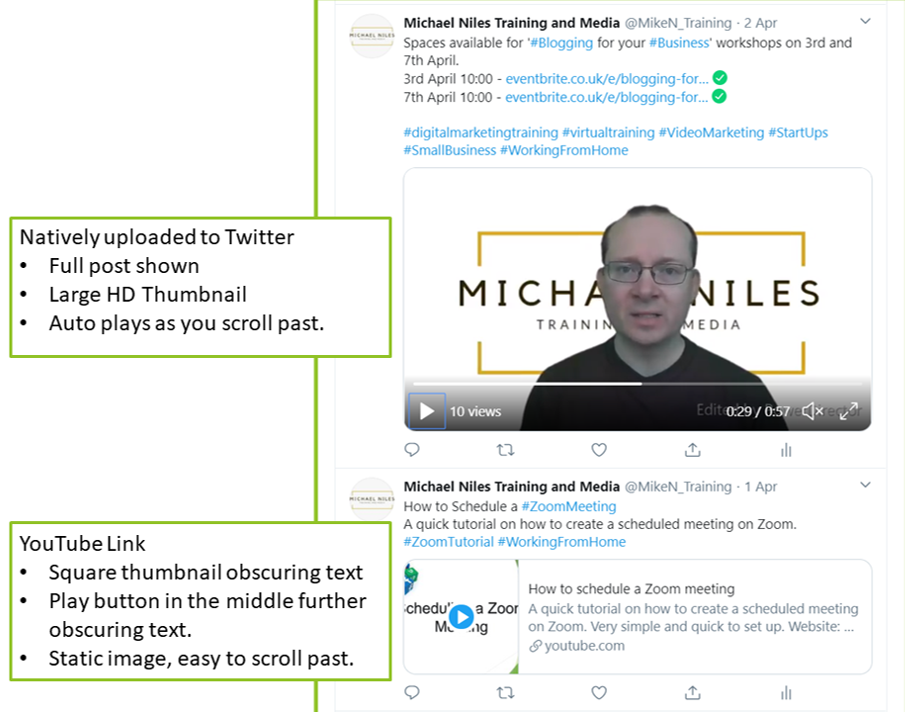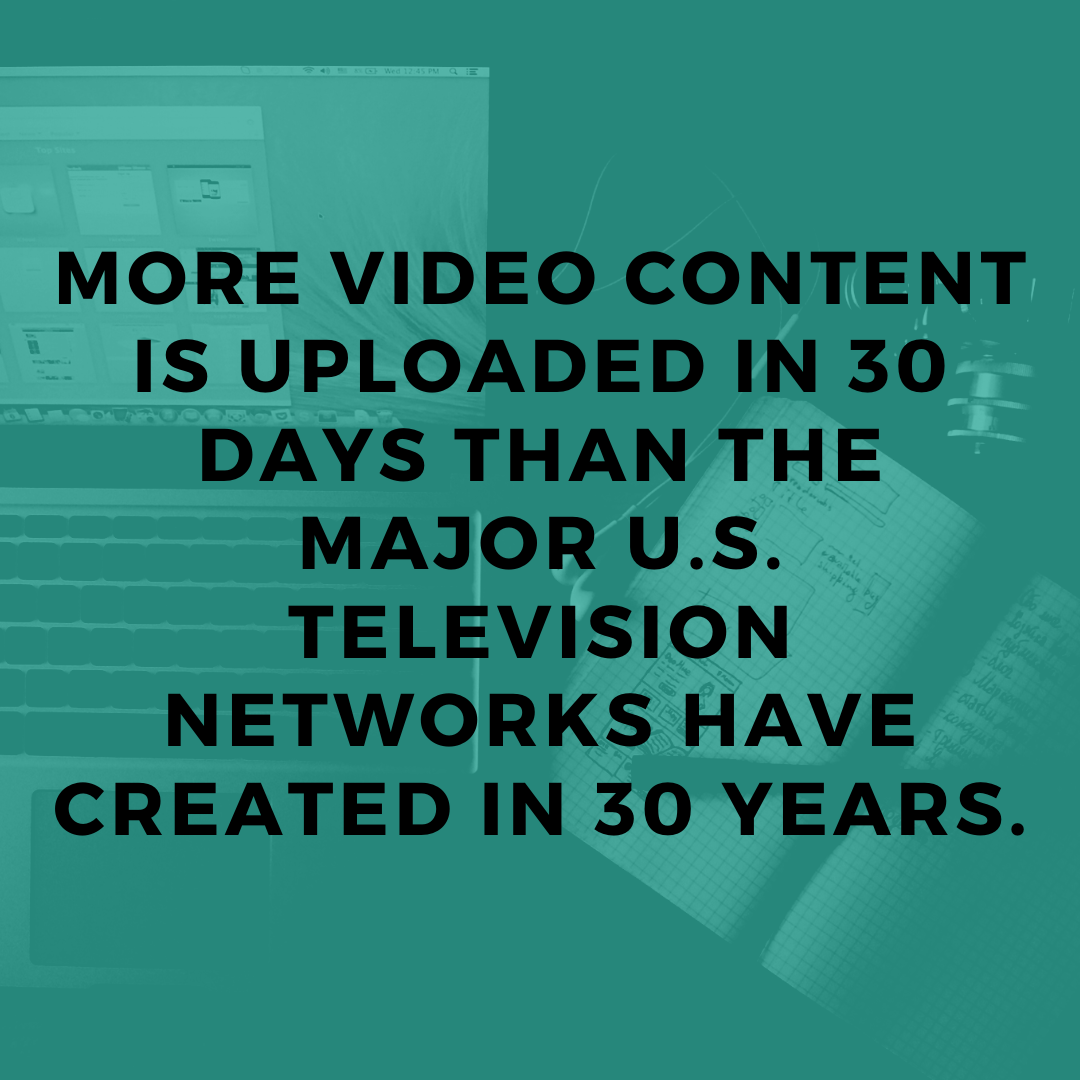The importance of Native Video in Social Media Marketing
There is no doubt that video content is critical for effective digital marketing. With social networks and Web sites the landscape has changed considerably over the last few years. Social networks are no longer content to host links from competing platforms like YouTube and Vimeo. As a result, to get real traction you need to be uploading native video on your principal social networking platforms.
So, what is native video? Simply it means taking the video file and uploading it directly to the social network. In the same way you attach a photograph to a post, you will now add a video. This can make a huge difference to the engagement that your posts get on social networks.
All the principal networks and have focused on video content above any other type. Facebook LinkedIn and Twitter all support and promote native video content above any other type of post. It is a phenomenal way to reach new audiences and get significant engagement.
Social Media Video Statistics
Statistics show that video content gets much more attention (Statistics from Hubspot)
- 45% of people watch more than an hour of Facebook or YouTube videos a week.
- Social video generates 12 times more shares than text and images combined.
- Native videos on Facebook have 10 times higher reach compared to YouTube links.
This is critical, considering that Facebook shows so few of your standard posts even to the people who like your page.
(All Statistics from WordStream)
Social Networks Make YouTube Look Bad
Another reason to engage with native video on social platforms is that they quite deliberately make links from other platforms, such as YouTube and Vimeo, look bad. Posts from links will be static and so are much easier to scroll past. In the case of Twitter, a YouTube thumbnail is reduced to a square making the rectangular thumbnail from YouTube difficult to read, there is also big play button in the middle of that thumbnail to obscure it even further (Check out the image below or the video above to see).

The text describing the video is very bland and easy to miss. This is a deliberate attempt to make YouTube content less engaging on the platform. LinkedIn and Facebook are little bit more forgiving and will give a large rectangular thumbnail but again the image is static.
Size and Movement Grabs Attention
However, native video on Facebook, LinkedIn and Twitter will always be in a nice big rectangular thumbnail that takes up the whole feed. As a result, it is difficult to miss, also native video will automatically play in high-definition as someone is scrolling past it. This is a critical differentiator as movement catches your attention faster than a static image or text. Using video or in some cases gifs make your content stand out in crowded feeds. Therefore, you are more likely to get engagement from customers.
Short Video Works Best on Social Networks
Make sure that when you are creating video content for your social media feeds that the original file is uploaded directly to the platform. Facebook will allow up to 2 hours of video to be uploaded, LinkedIn will allow 10 minutes and Twitter 140 seconds (2 minutes and 20 seconds). However, 56% of all videos published in the last 12 months have been under 2 minutes long. This is a good rule of thumb for native video on social platforms as they are easier to watch, shorter and more suited to a busy disposable platform.
So do we Still Need YouTube?
Does this make YouTube redundant? Well no it doesn’t. For your own content on social networks, YouTube is no longer the way to go. Natively uploaded content will get better traction than a link from YouTube. However, YouTube still has an important place in your marketing plans.
Firstly, it is the second-largest search engine in the world after Google. Having a presence on YouTube is going to help overall reach. Most critically it is brilliant for your website and email marketing campaigns.
- Video content on website landing pages can increase sales conversion by over 80%
- Having a video on a landing page makes it 53% more likely to show up on page 1 of the search engine result page (SERP).
- The average user spends 88% more time on a website with video

A Benefit to Search Engine Optimisation
It is also good for search engine optimisation. A YouTube link on your page can be crawled by Google, the information that has been put into the back end of the video can be used to gain greater insight into the content of the page. Importantly a YouTube link on a website loads incredibly fast, keeping page loading speeds low (a very important ranking factor) without losing the quality of the video itself.
YouTube links are important for email marketing. Emails with video in the title have an increased open rate and share rate. Using a YouTube link avoids a large file attachment that might not get delivered.
- Video can increase open rates by 19% and click rates by 65% while reducing unsubscribe rates by 26% (Campaign Monitor)
Viewers Retain 95% of a Message when they Watch it in a Video
The critical statistic is that ‘Viewers retain 95% of a message when they watch it in a video compared to 10% when reading it in text’. Therefore, if you are trying to get a message across using video is by the most effective resource in your toolkit.
Essentially native video and video links are equally important they just need to be used in different places, at different times, to get different results. Native video is by far the best way to get engagement across your social media platforms. YouTube gets you reach on the 2nd largest search engine, as well as being a powerful addition to email marketing and website engagement. The great thing is that you don’t necessarily need two different videos, whatever file you create can upload directly to a social network or to YouTube, there is no additional work.
The Rise and Rise of Video Content
There is no doubt that video content is on the rise. Streaming services like Netflix, YouTube, the BBC iPlayer, Disney plus and Amazon prime are in everybody’s homes and on everybody’s phones. Video sites will become the most convenient and simple way to access content. As a result, it is probably best for your business to get on the video bandwagon now, establish your credibility and give yourself an edge against competitors who have yet to embrace this valuable medium.
Small Business Digital Marketing Courses
I can provide you with lockdown friendly online digital marketing courses that cover video marketing and other subjects. They are only £10, last 90 minutes and are delivered via Zoom. To learn more either visit my course page or go directly to my Eventbrite page to book your place.
Happy posting.